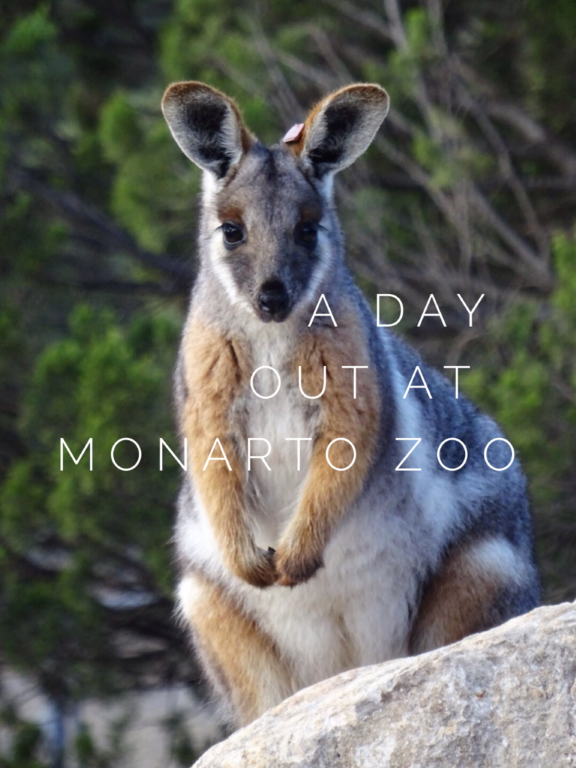
It’s usually a spur of the moment decision to visit Monarto Zoo. It starts with an hour-long road trip through the Adelaide Hills along the South Eastern Freeway, past rolling hills and farmland, and ends with finding yourself at the gates of one of the largest open range zoos in the world.
Just arriving at the visitor’s centre carpark feels like an adventure in itself – the speed limit in to the park is set at 30km/h, and gives you plenty of time to spot wild kangaroos and emus stalking their way through the bushland as you make your way towards the carpark.
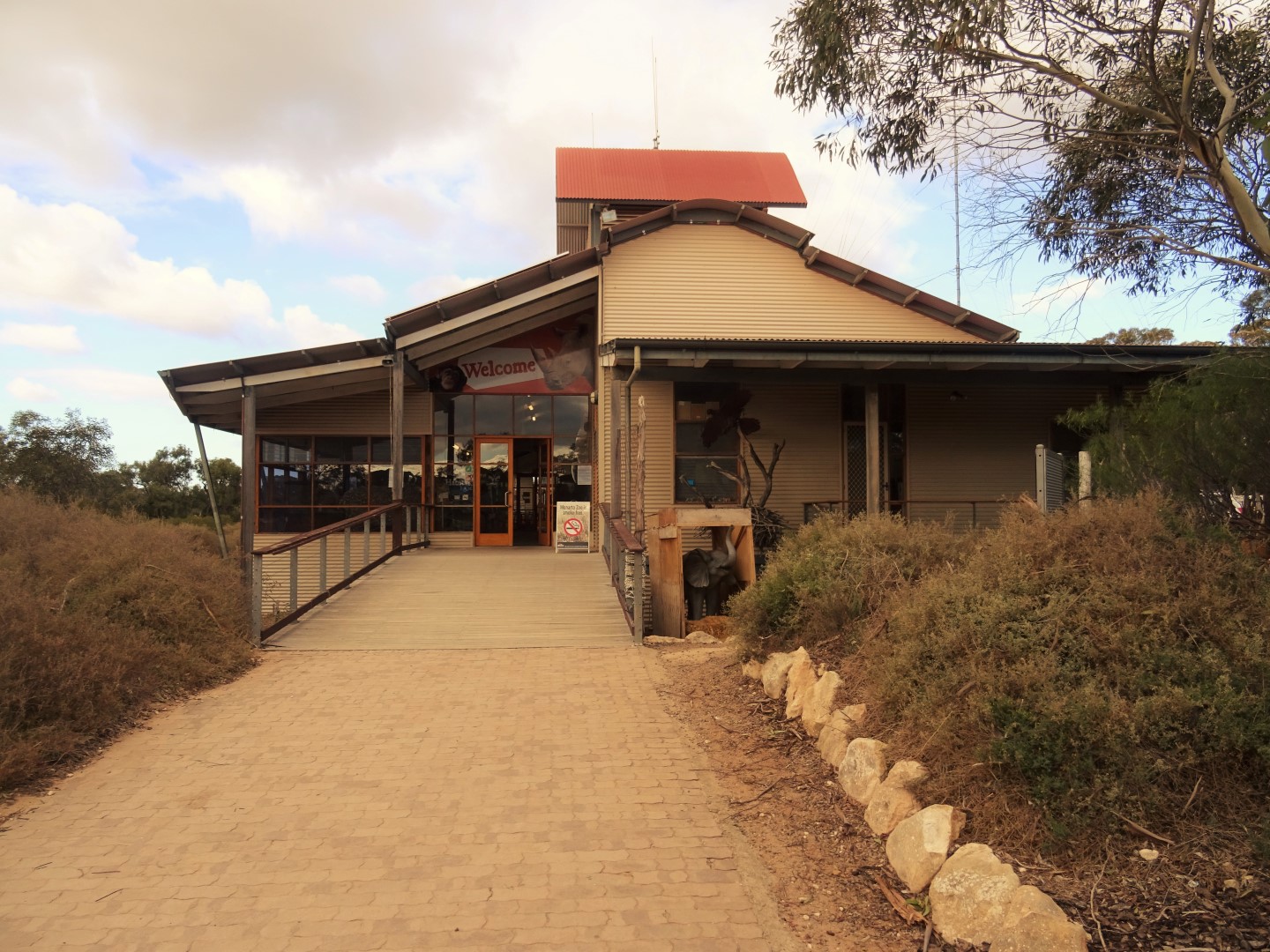
Once you reach the visitor’s centre, there are two ways of exploring the zoo – you can either hop on a free bus that drives you through the exhibits, or if you’re feeling energetic, there are over ten kilometres of walking trails that take you through the zoo.
We decided to tackle the trails.
Right outside the Visitor’s Centre you’ll find a mob of meerkats. Meerkats are one of those animals that I could spend all day watching as they scurry and dig and stand up on their hind legs when something captures their attention.
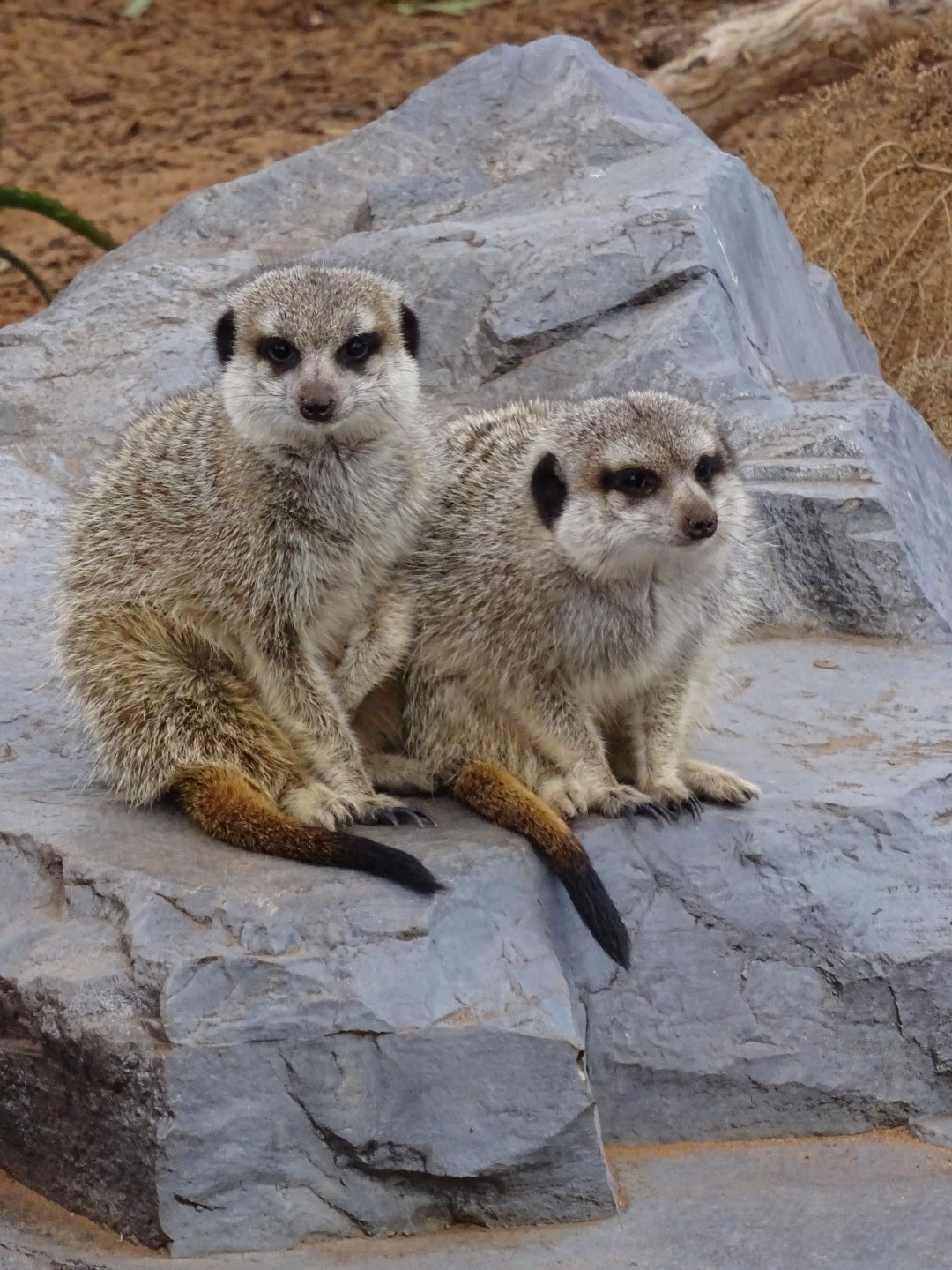
Unfortunately, we couldn’t spend all day with the meerkats – we had an entire zoo to explore!
Walking away from the visitors centre, we came across the Yellow Footed Rock Wallaby enclosure. Usually when we come through here, we don’t glimpse the timid wallabies but today we were lucky and saw two basking in the wintry sun.
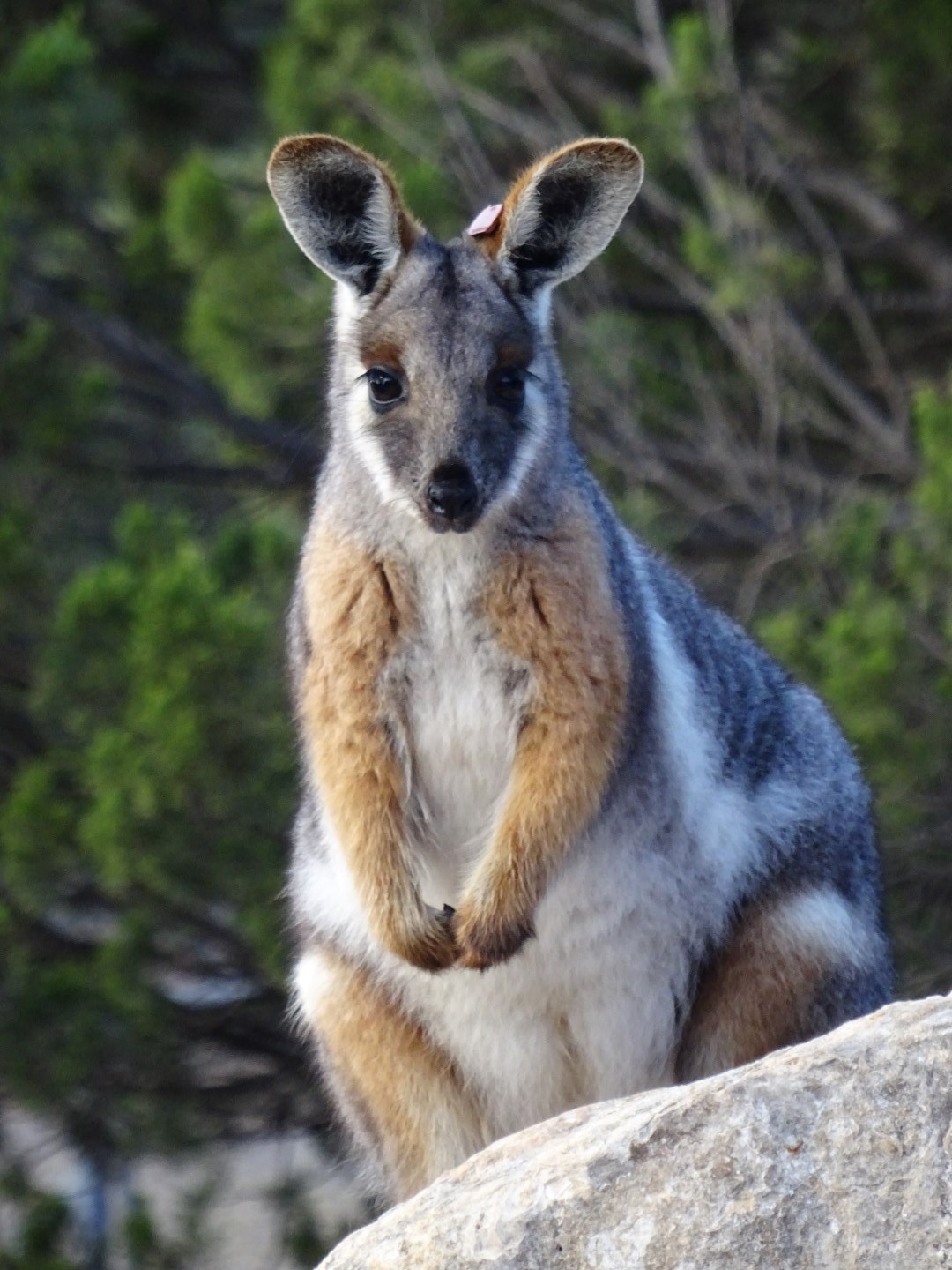
Close by are the chimpanzees, who come right up close to you in their undercover playground, which is where they tend to hang out. The success of Monarto’s chimpanzee breeding program means that there’s often young adventurous infants playing, though today the most recent addition to the troupe was cuddled up with its mum, hidden from view.
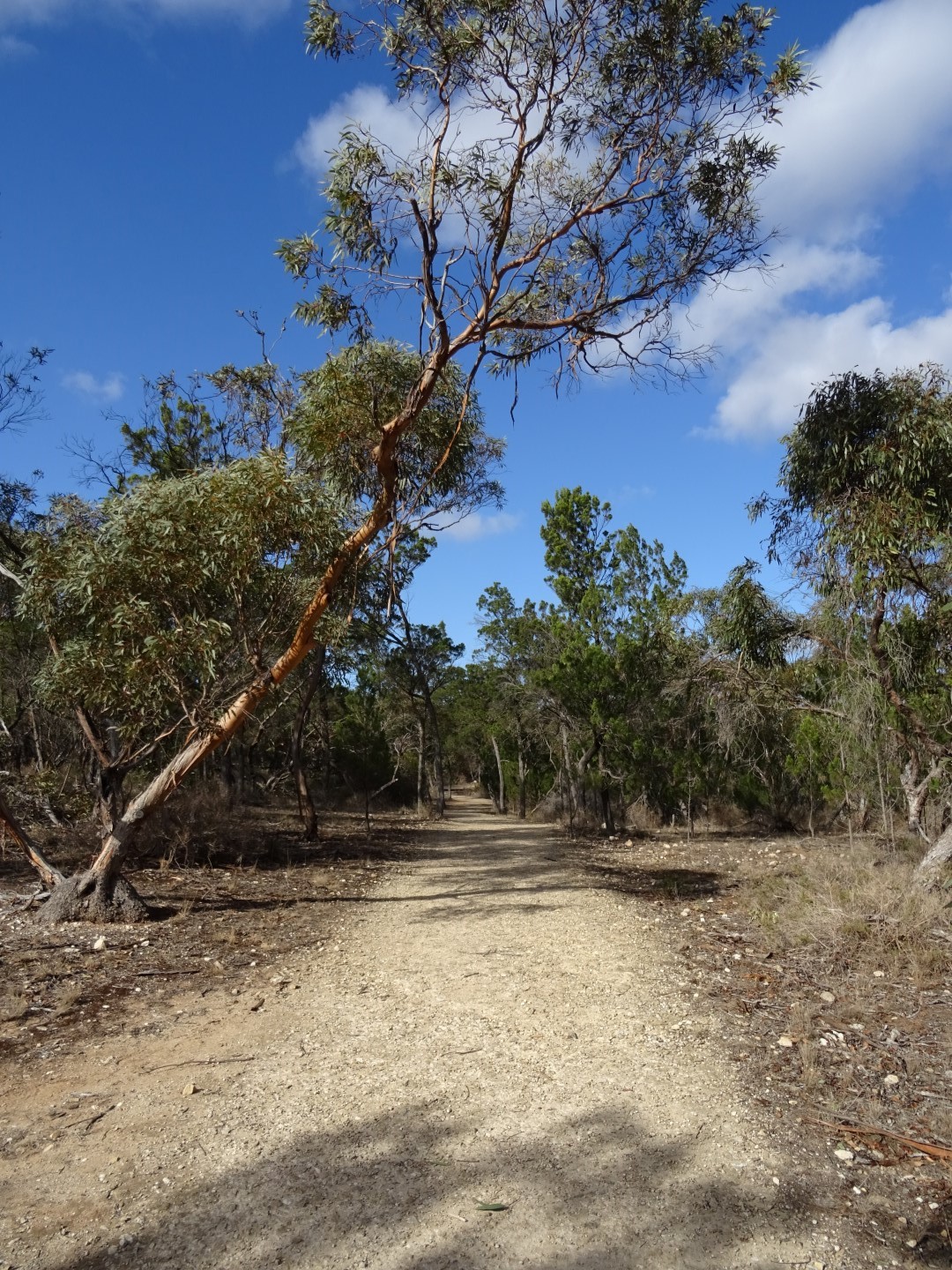
From there we took the Ridge Trail, walking through the mallee scrub, where we stopped at various lookouts to gaze at herds of black rhinoceros, zebra, Indian antelope, scimitar-horned oryx.
It’s a peaceful walk – most families who come to the zoo opt to take the bus around the zoo so there’s generally not too many people around – and it’s pretty cool to look out and feel like you’re in the wild.
At the end of the walking trail, we came out on to the Water Hole – an area containing ostrich, Chapman’s zebra and Australia’s biggest herd of giraffe.
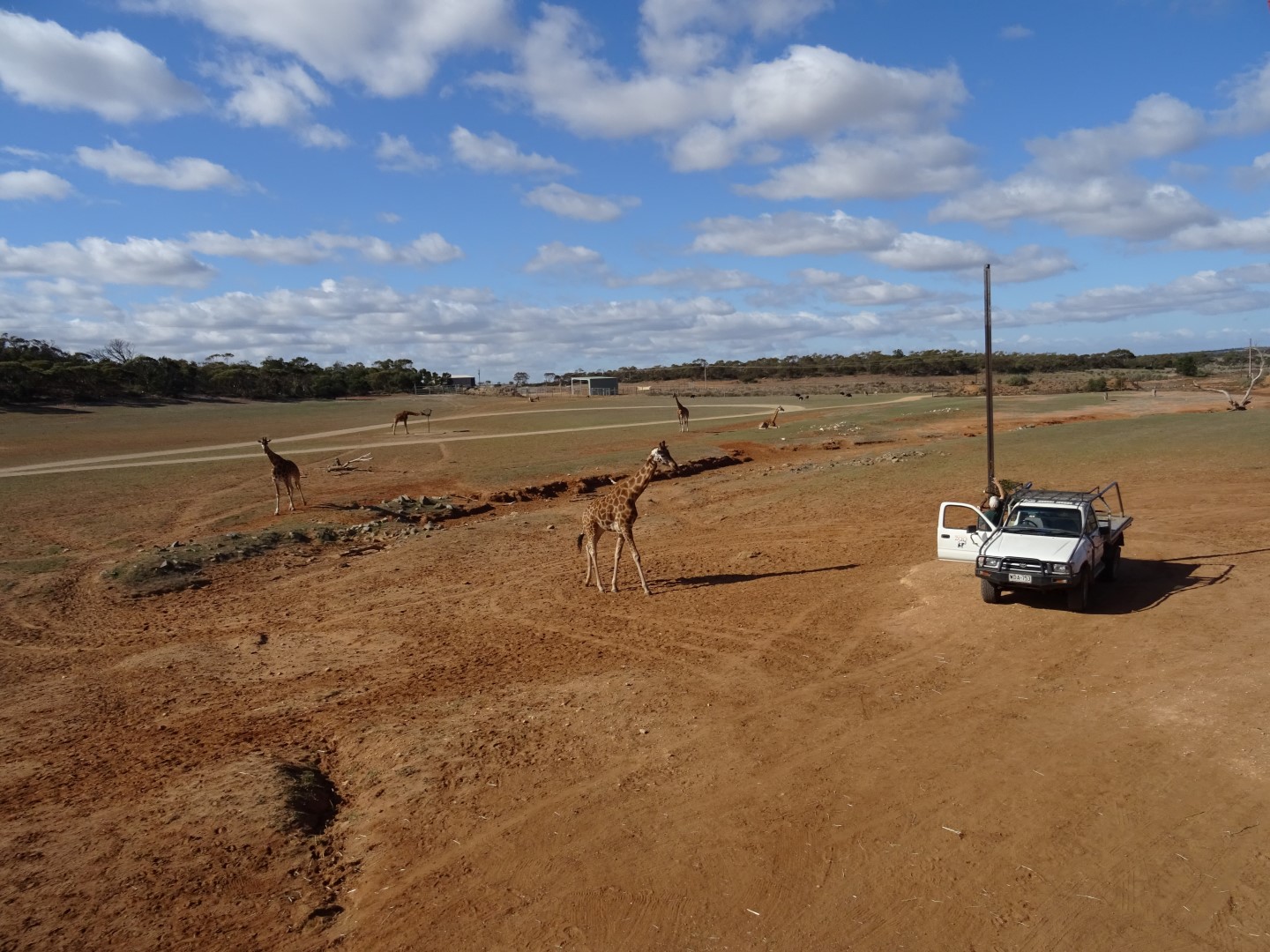
Arriving just in time for the keeper talk, we were introduced to ‘Kinky’ – a giraffe who was born at the zoo but because her mother sat down to deliver her instead of standing, she was born with a broken veterbrae, thus giving her a kink in her neck.
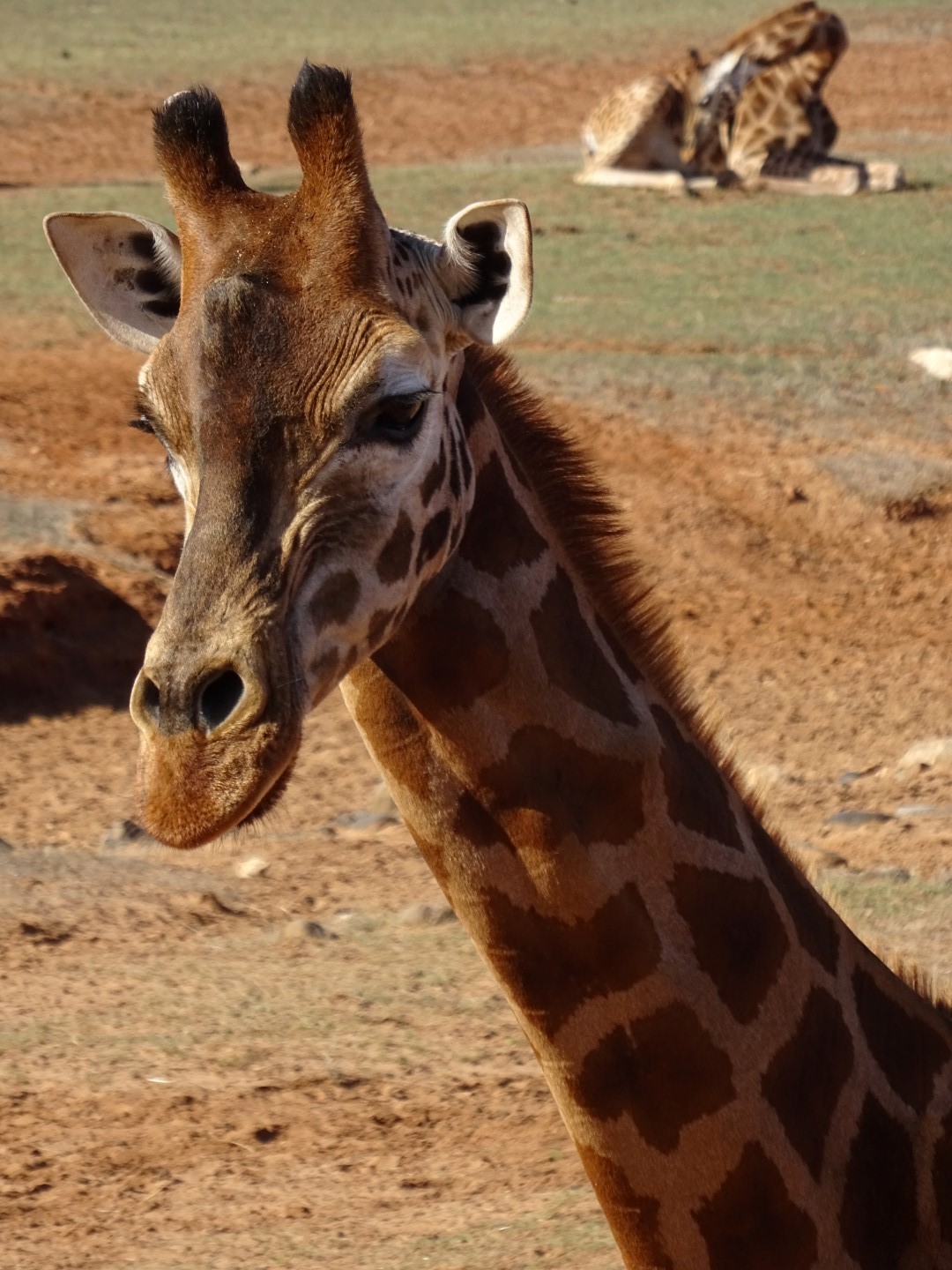
We took the Creek Track back to the Visitors Centre, narrowly missing being crashed in to by two emus dashing across the path (emus and kangaroos roam around the zoo).
After lunch at the on-site cafe, we queued for the Zu-loop shuttle bus. Besides the driver, a zoo volunteer also comes onboard to provide commentary on the history of the zoo and trivia about the animals it houses as well as the conservation programs they undertake to ensure the survival of the animals.
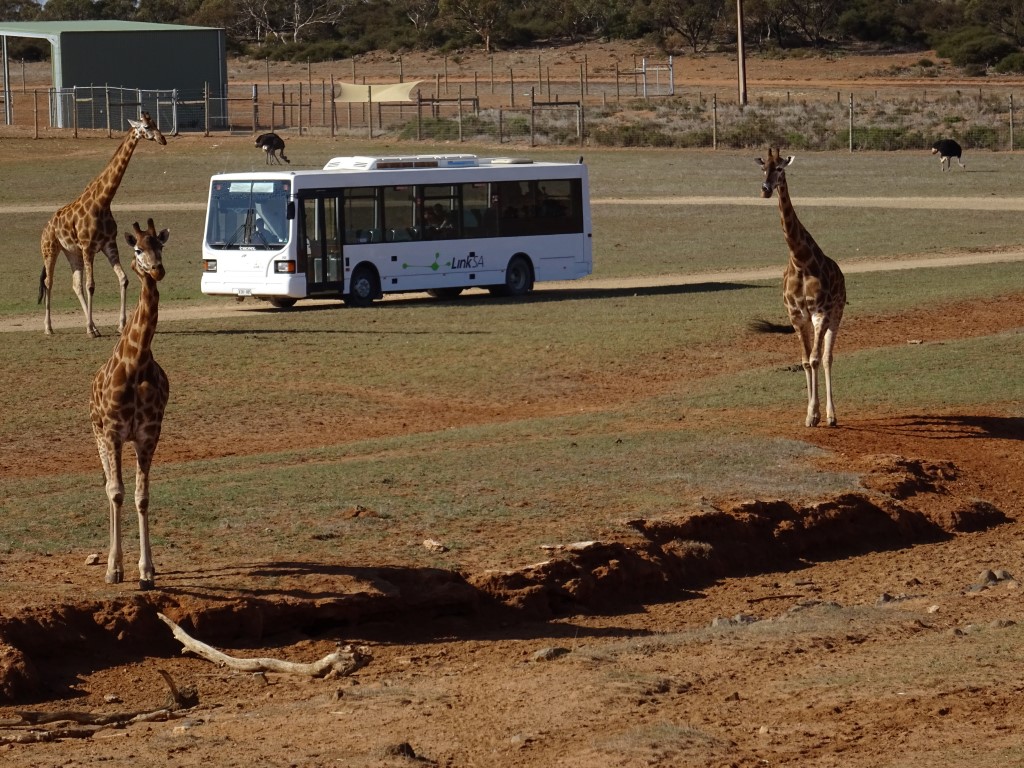
Doing the bus tour around Monarto Zoo always makes me feel like I’m about to enter Jurassic Park – the bus draws close to a gate, and waits for it to open, and before you know it you’re inside the animal’s enclosure. If the animals are feeling curious, they’ll come right up to the bus.
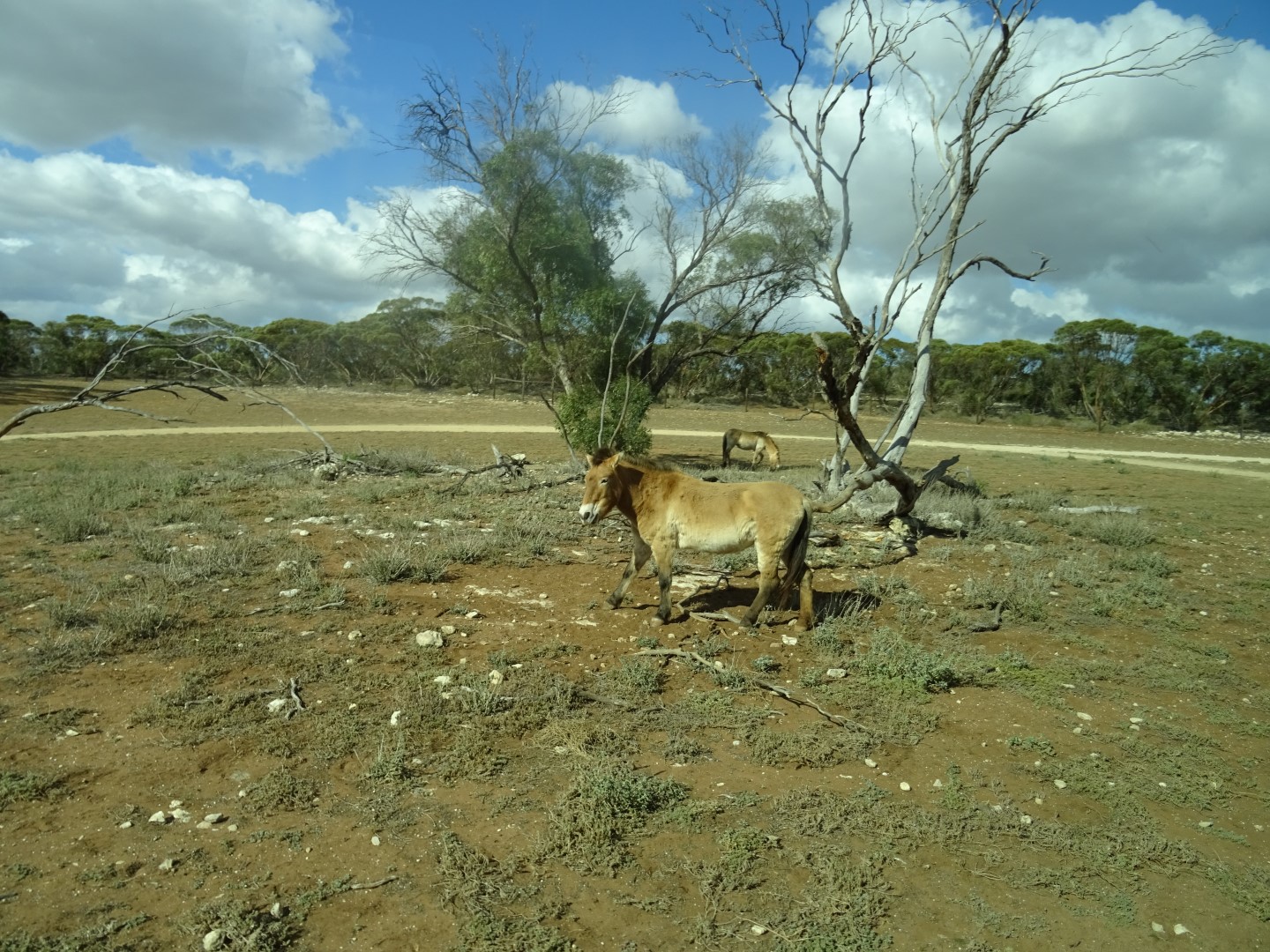
On the bus tour, you’ll see Prewalski’s horses, bison, deer, white and black rhinoceros, zebra, bongoes, ostriches, eland, waterbuck, oryx and cheetah.
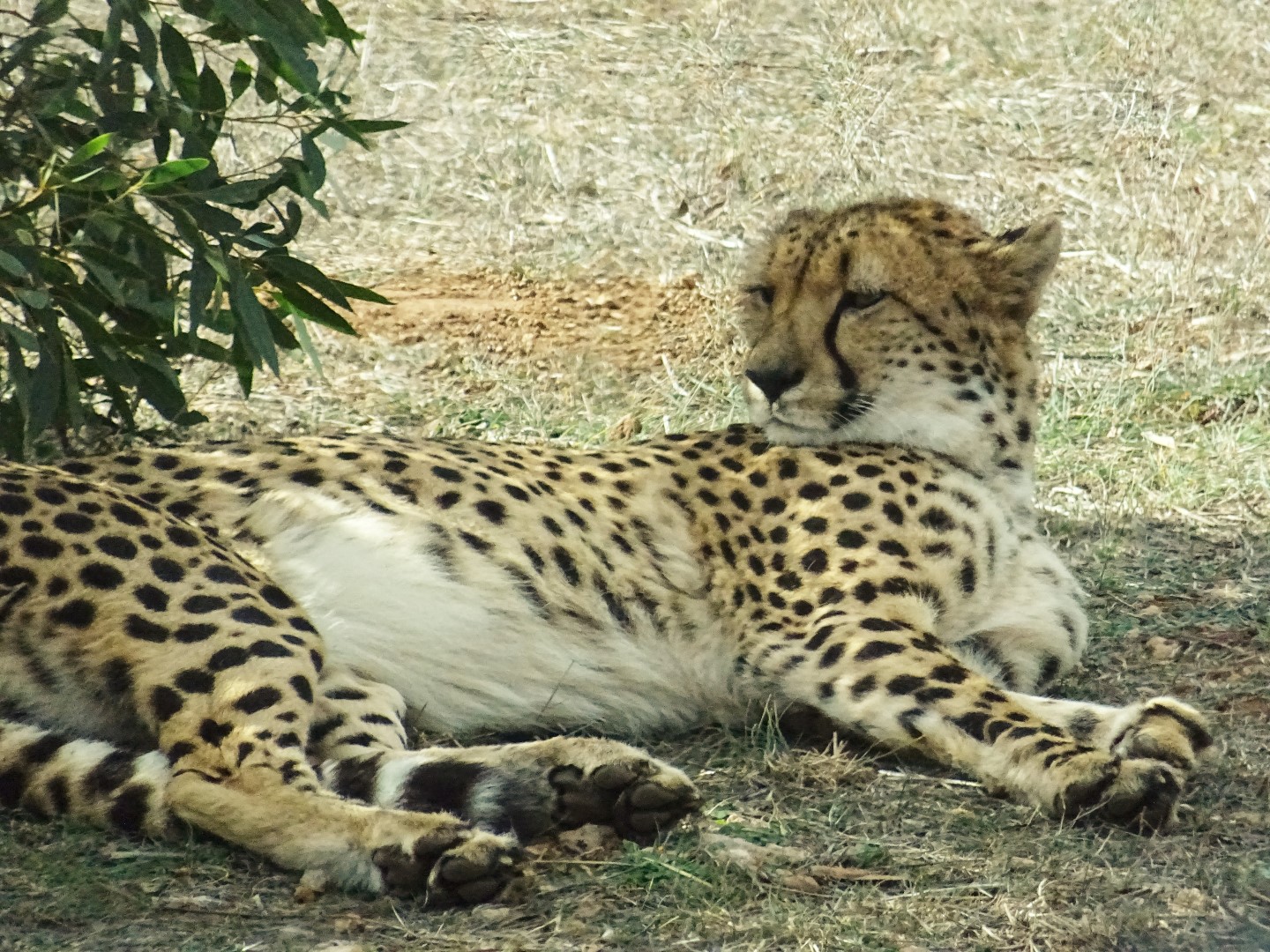
There are bus stops along the way to get a closer view of the animals – including at the Water Hole to see the giraffes, and the Boma to get up close and personal with a rhino (and maybe have a chance to pat one!).
To see the carnivores, you’ll need to get off at Windana, the furthest away of all the bus stops, and either view the hyenas, African painted dogs, and lions and lionesses from the viewing platform, or by taking a separate bus through their enclosures.
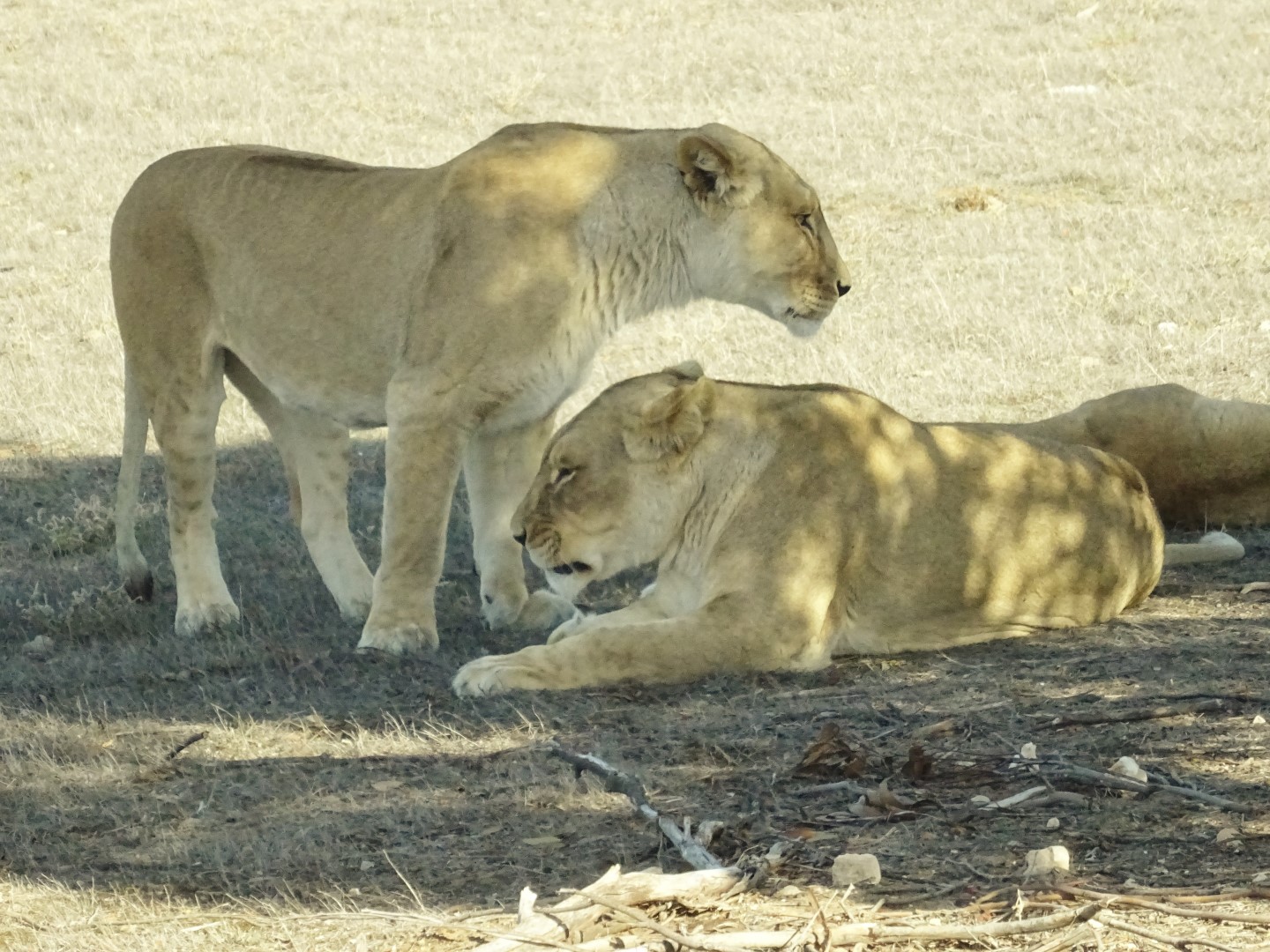
Ryan captured our visit on video – he’s just invested in one thing he thought he’d never buy – a selfie stick – and tried it out for the first time during our zoo trip.
https://www.youtube.com/watch?v=c40iErWdAfs&start=12
Zoos are important for animal conservation and the work they do with breeding programs to protect animals under threat from extinction. Because of this (and the opportunity for a lifetime of ‘free’ zoo visits!), I purchased a Zoos SA Lifetime Membership on my thirtieth birthday, so I could support the zoos in the work that they do in ensuring these endangered animals will thrive and be around for many generations to come.
It’s always a good day out at Monarto Zoo – I get to have the feeling of going on a safari without straying too far from home!
